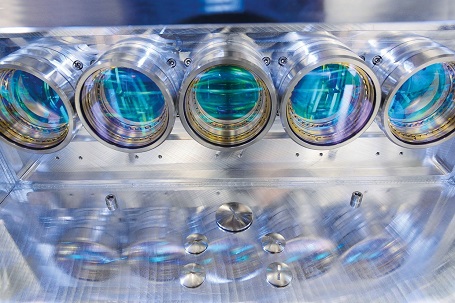AACHEN, Germany, July 23, 2021 — In cooperation with ASTM International (a nongovernmental standardization organization), the Fraunhofer Institute for Laser Technology (Fraunhofer ILT) has begun work to standardize the monitoring of machine condition in laser beam powder-bed fusion (LB-PBF) systems. Fraunhofer ILT is selecting and qualifying imaging sensor technology that can be used to specifically monitor the condition of the 3D-printing systems.
Additionally, the institute is deriving cost-reducing recommendations for end users of the technology. Fraunhofer ILT aims to help end users independently assess the condition of optical systems and to plan maintenance cycles based on data regarding the actual condition of the system.
“Manufacturers’ current maintenance guidelines are often still far too conservative. In contrast to long-established manufacturing technologies, there is no or only a comparatively small database available as a basis for making decisions whenever maintenance cycles need to be determined,” said Niklas Prätzsch, project manager in the Laser Power Bed Fusion competence area at Fraunhofer ILT.
“For this reason, users replace components too early and increase operating costs because both unproductive downtimes and the consumption of spare parts increase,” he said.

Optical system of a multiscanner LB-PBF system. Corresponding systems are to be monitored as part of the project. Courtesy of Fraunhofer ILT.
Monitoring LB-PBF systems is an important preventative measure in maintaining cleanliness in operation. The high-precision, wear-sensitive, and expensive optics of the corresponding systems place high demands on cleanliness. Very fine metal powder is used, and the optical systems can become contaminated during processing. The increasing number of optical systems and higher laser powers used in LB-PBF have an aggravating effect.
“The load, probability of failure, and maintenance effort of optical systems are increasing, while users still have to cope with maintenance guidelines based on little experience with previous systems generations,” Prätzsch said.
Fraunhofer ILT will be working until the end of the year to develop guidelines to standardize and simplify the maintenance and servicing of LB-PBF, 3D-printing systems. The standardization aims to enable end users to easily and quickly generate their own database, making it easier for them to correctly classify and interpret data. The goal is a standardized decision-making best-practice that recommends to the end user when and how to conduct maintenance or calibration.
“We are providing end users with recommendations that simplify their use of cost-effective imaging sensor technology for condition monitoring of optical systems in LB-PBF systems,” Prätzsch said. “Based on the data, they can then make informed decisions about whether or not maintenance is necessary.”
The goal is standardized condition monitoring that reduces the time previously spent on servicing and maintaining optical systems.